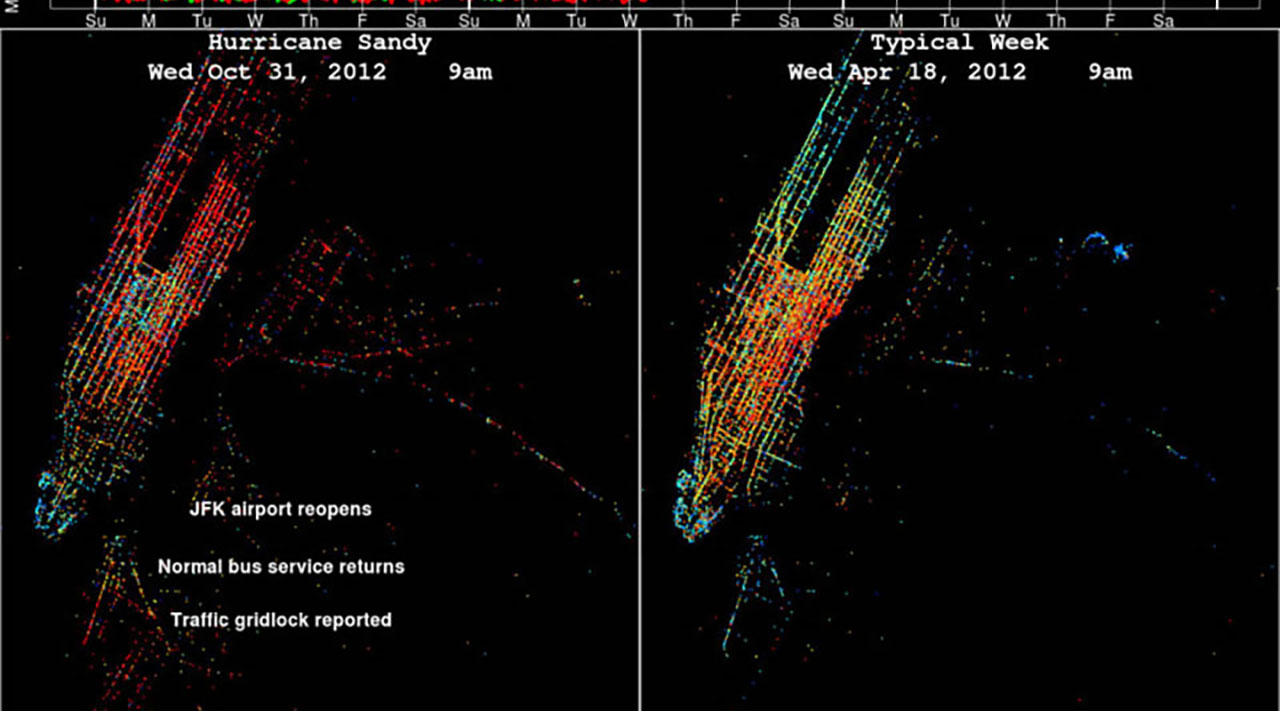New York City’s resilience during Hurricane Sandy wasn’t just a mood that spread across the city — it was a measurable, chartable phenomenon. Researchers noticed that despite the mass chaos that resulted from Manhattan’s partial several-day blackout, taxi drivers were relatively adept at navigating the city. Charting the paths of New York City’s taxis during the days after the Atlantic coast’s largest superstorm hit, researchers from the University of Illinois have developed a new methodology cities could use to assess the resilience of their transportation systems. From Science Daily:
Dan Work, an assistant professor in the Department of Civil and Environmental Engineering (CEE) and Brian Donovan, a graduate student in CEE’s Sustainable and Resilient Infrastructure Systems program, analyzed GPS data from nearly 700 million taxi trips — representing four years of taxi travel in New York City — to determine the city’s normal traffic pattern and study the variations during extreme events like the hurricane and snowstorms. The data, routinely recorded by taxi meters, shows travel times and the metered distance for various trips around the city at different times of the day and night. The researchers’ method works by computing the historical distribution of pace, or normalized travel times, between various regions of a city and measuring the pace deviations during an unusual event.
The visualization, below, illustrates the typical traffic patterns of cabs (right) versus the pattern directly after Hurricane Sandy, using data from the New York City Taxi and Limousine Commission.

The most important finding of the study, according to Work: “Importantly, this project shows us that the period immediately following the disaster should be the focus of additional research, with the ultimate goal of enhancing post-disaster transportation management and policy.”
They hope further studies will lead to “actionable information” in regards to transportation engineering.



